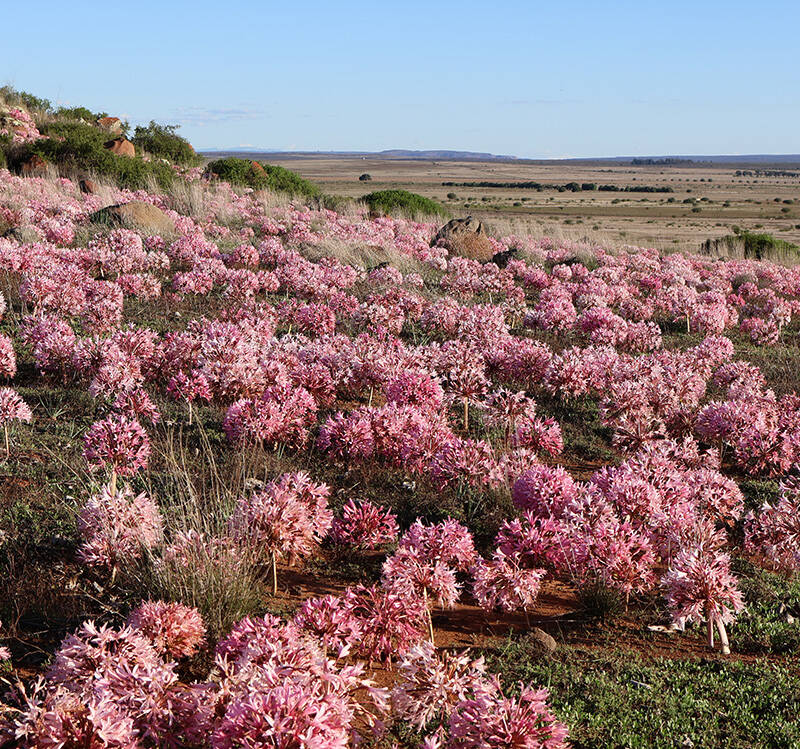A little voyeurism can be useful when planning garden visits, and an under-gardener on Instagram, handy with a camera, is invaluable. Lee Behegan (@theplantboyy) began working at Lismore Castle in County Waterford, Ireland, when he was still at school. Now 20, he is “trusted with more horticultural jobs” and will be interning at Chanticleer Garden in Pennsylvania this summer. Here he shows us around.
Photography by Lee Behegan.
Summer

Lee uses a real camera as well as his phone. His work day begins at eight in the morning and ends at four-fifteen, all year round. Gardening is something that he enjoyed doing with his grandfather, helping in the vegetable garden and competing with him in their annual sunflower competition.
The castle was built as an abbey and was repeatedly plundered by Vikings before being taken over by the Normans. Sir Walter Raleigh owned it for a while, followed by the Great Earl of Cork Richard Boyle in 1602. The garden designed for him at that time remains today in the upper terraces of Lismore, while the lower pleasure gardens were designed by the legendary Sir Joseph Paxton, whose role as head gardener did not preclude activities in castle design.

Paxton, the gardener at Chatsworth who was eventually knighted by Queen Victoria (for services to botany, engineering, architecture, etc.), played an important part in fashioning Lismore, working closely with the Sixth Duke of Devonshire (its owner), also known as the Bachelor Duke. The previous duke had been neglectful, allowing weed trees to take over the gardens of his properties. His son did the opposite, importing stone from Derbyshire to Ireland, and bringing Paxton over to design buildings, including the vinery shown here, but also less expected things, like a convent in Lismore: “The nuns doat on him,” wrote the Duke.

“The castle is hired out to visitors from around the world,” says Lee Behegan, with one wing saved for Lord and Lady Burlington, the next generation of Chatsworth Cavendishes. “The family are very interested in the gardens and love what we are doing.” In other words, the place is productive.

It is fortunate for this place that the Bachelor Duke took such a keen interest in the castle and its gardens, being an aesthete of impeccable style and much admired by the late Deborah Devonshire in her book Chatsworth: The House. In remodeling the castle from 1812 on, his intention was for something “quasi-feudal, ultra-regal.”

Autumn

“Beautiful Lismore Castle afforded us much pleasure.” Sounding like the diary entry of an 18th-century gentleperson, this is in fact the observation of Fred Astaire, in his maddeningly discreet autobiography, Steps in Time. He visited whenever his filming schedule allowed, since his sister, Adele, was married to Charlie Cavendish, younger brother of the Duke of Devonshire. You’d never guess it from Fred, but according to the late Deborah, Duchess of Devonshire, Adele loved to shock her English in-laws, while Charlie’s early demise was hurried along by drink.

Although the Devonshire estates have always passed to the eldest son, leaving them intact, it was useful to have some of the houses lived in by siblings, otherwise they went to waste. Charlie’s sister Maud wrote, in a letter quoted in Deborah Devonshire’s excellent book, The Garden at Chatsworth “We never really felt we had a home, as we had far too many.” Every January to March was spent at Lismore. “It was useless to try and garden, as we were never in the same place when the seeds or bulbs we planted appeared above ground.”


“The gardens have really changed in the last four years, since Darren Topps was appointed head gardener,” Lee says. “Each winter we tackle a big development in the garden and have been reaching record visitor numbers.”
Winter

Winter is not as quiet as it looks. “This winter we relandscaped the castle courtyard,” says Lee. “This morning I was mulching the new beds we put in, with enriched compost.”
Spring

The gardens at Lismore Castle open again today, March 16. For information, see Lismore Castle.














Have a Question or Comment About This Post?
Join the conversation (0)